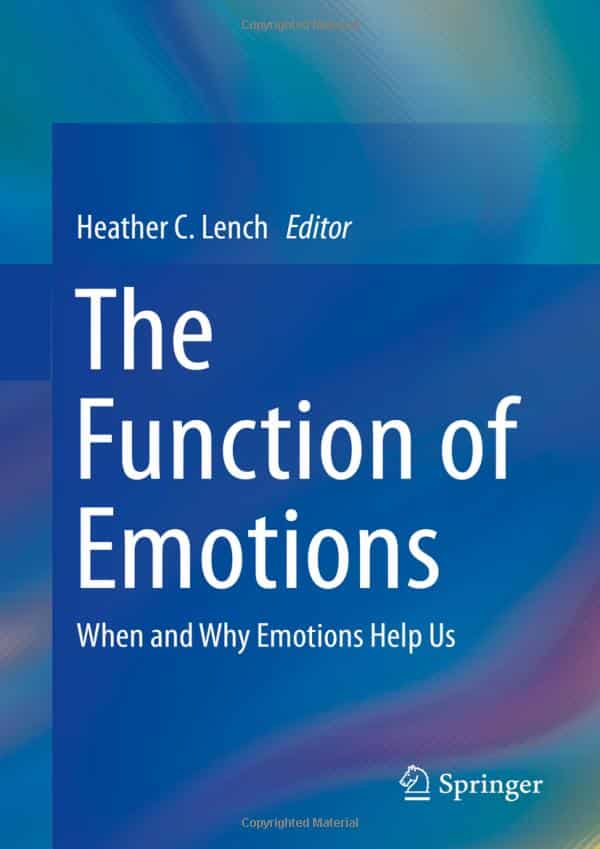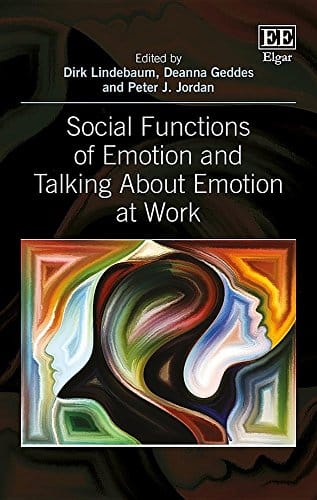The Function of Emotions
by Dr. Heather Lench
This eye-opening text brings together research from behavioral science, neuroscience, and other fields to make a cogent case for emotions acting as a practical framework for living our lives. The book includes how fear and anxiety promote attention and protective behavior, how sadness and depression promote analysis of complex problems in goal-pursuits, how happiness promotes processing and attention, how love promotes relationship development and goal attainment, and how pride promotes a sense of self and identity.
“The key defining feature is that emotions are responses to events or circumstances – they are ‘about’ something”...Understanding the functions of emotion can therefore enhance our ability to use emotions in daily life and to recognize the value of even difficult or negative emotions.”

Guide to Elementary Statistics for Psychology
by Dr. Heather Lench, Rebecca Schlegel, and Christopher Berry
This text provides an accessible and practical take on descriptive and inferential statistics used in psychology and other behavioral sciences. Each chapter focuses on a different statistical test and users are walked step-by-step through running the analysis in SPSS and interpreting the output. Multiple exercises are provided for practice with hand calculations of statistics and use of software for analysis.
“Even if you’re not a fan of statistics, we hope that you will learn that you have the ability to do match and that math can be useful to you in your life and career.“

The Moral Psychology of Boredom Edited by Andreas Alpidorou
Contains chapter on Boredom and the Lost Self
by Shane Bench, Heather Lench, Yidou Wan, Kaitlyn Kaiser, and Ken Perez
Whether we like it or not, boredom is a major part of human life. It permeates our personal, social, practical, and moral existence. It shapes our world by demarcating what is engaging, interesting, or meaningful from what is not. It also sets us in motion insofar as its presence can motivate us to act in a plethora of ways. Indeed, in our search for engagement, interest, or meaning, our responses to boredom straddle the line between the good and the bad, the beneficial and the harmful, the creative and the mundane. In this volume, world-renowned researchers come together to explore a neglected but crucially important aspect of boredom: its relationship to morality. Does boredom cause individuals to commit immoral acts? Does it affect our moral judgment? Does the frequent or chronic experience boredom make us worse people? Is the experience of boredom something that needs to be avoided at all costs? Or can boredom be, at least sometimes, a solution and a positive moral force? The Moral Psychology of Boredom sets out to answer these and other timely questions.

Social Functions of Emotion and Talking about Emotion at Work Edited by Lindebaum, Geddes, & Jordan
Contains chapter on Benefits of Awe in the Workplace
by Ken Perez and Heather Lench
Despite how much we know about emotion, Social Functions of Emotion and Talking About Emotion at Work uniquely examines the utility of emotion in organizations against the ways in which both individuals and groups talk about them. Drawing on psychological and sociological research, this book provides groundbreaking insights for understanding how emotions are used in the workplace.
Bringing together contributions from leading emotion researchers, this book features chapters focusing on 10 emotions, ranging from awe to shame. Through its exploration of the ways each emotion functions in relation to how we talk about them, this book injects fresh theoretical and practical momentum into how our discussions of workplace emotion can affect how emotional events are appraised over time and place. This, in turn influences the causes, expressions, and consequences of emotions in the workplace.
With its novel approach, this book will be an invaluable tool for academics researching emotion, as well as postgraduate students working in the social sciences seeking reference material on emotion. HR managers and general readers seeking greater insight into emotions at work will also find this book to be a useful tool.



